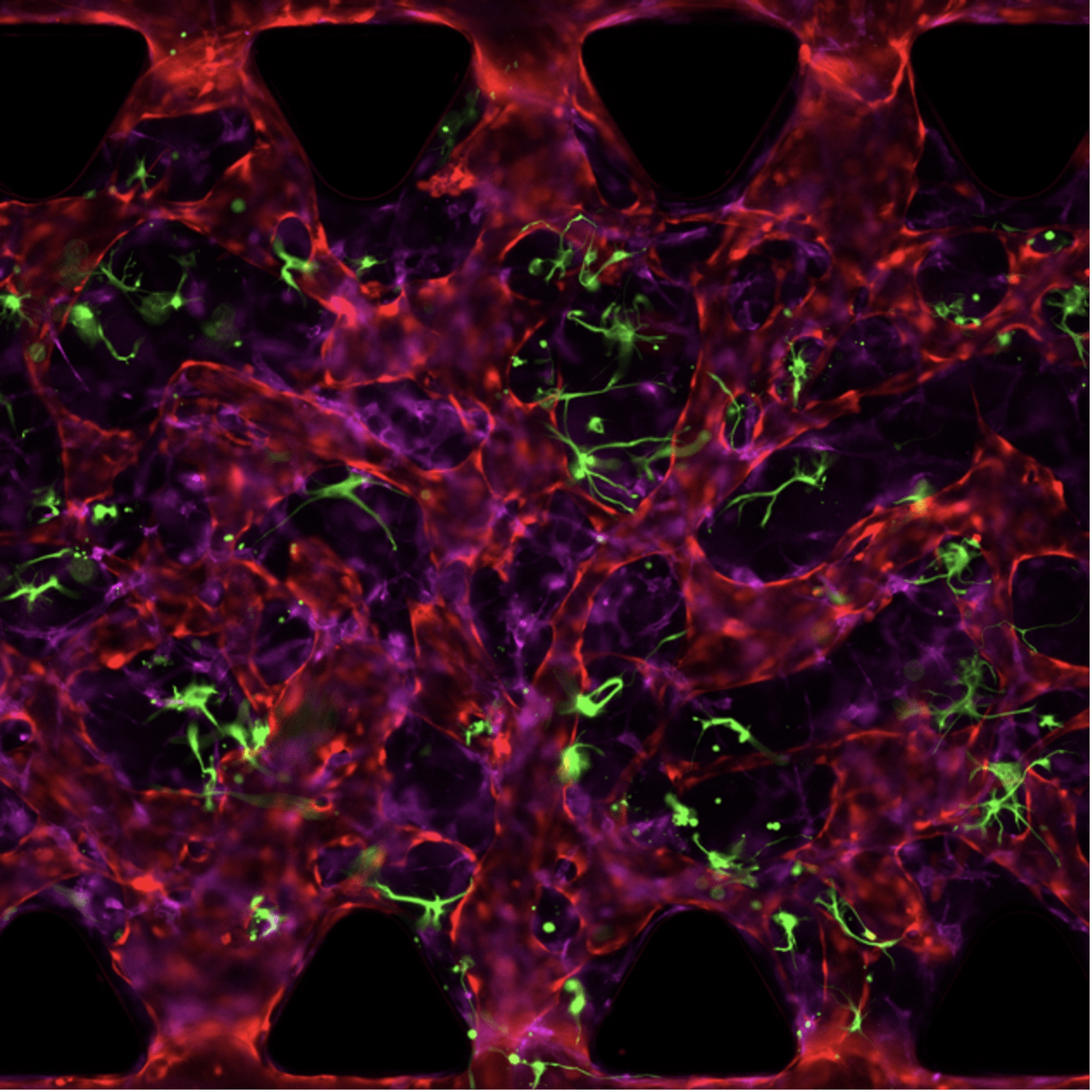Bioengineer Long-lasting 3D Neurovascular Microphysiological System to Model Chronic Inflammation Mediated Neurodegeneration
Science Objectives
The goal of the investigation, “Bioengineer Long-lasting 3D Neurovascular Microphysiological System to Model Chronic Inflammation Mediated Neurodegeneration,” is to develop a long-lasting neurovascular model that can be applied to evaluate the impact of chronic stressors to the brain, such as drugs, environmental toxins, inflammation, hypoxia and bacterial/viral infection for a duration of up to six months.
Experiment Description
One of the most significant obstacles in building a long-lasting 3D tissue model is the lack of a stable functional vasculature. The blood vessels not only transport nutrients and oxygen, but also secrete important angiocrine factors to instruct organ/tissue homeostasis. The continuous regression of vasculature in current models will disrupt perfusion and lead to tissue necrosis. To tackle this challenge, various techniques have been attempted, such as improving biomaterial hydrogels and perfusion systems. These efforts are valuable to prolong the vascular life span, but only to a limited extent, and 6 months remains a far-reaching goal. To study neurovascular interactions, the Bioengineer Long-lasting 3D Neurovascular Microphysiological System to Model Chronic Inflammation Mediated Neurodegeneration investigation will use a newly developed 3D human brain vasculature system that consists of human brain ECs, pericytes, and astrocytes. This investigation aims to extend the lifespan of the existing 3D neurovascular model from 1 to 6 months and demonstrate its utility by exposing it to chronic stressors.
Space Applications
The neurovascular model developed in this project can also be applied to evaluate the impact of microgravity and radiation on stem cell reserve, neuronal and glial damage. Because space flight involves long-term exposure to these environmental insults, assessing these stressors will help NASA develop mitigation strategies to ensure the health of astronauts on future space missions. In addition, the proposed project will implement technologies to simplify the operation and to minimize human interference, thus greatly facilitating its easy adoption in future space flight experiments.
Earth Applications
A long-lasting neurovascular model can be applied to evaluate the impact of chronic stressors to the brain, such as drugs, environmental toxins, inflammation, hypoxia and bacterial/viral infection. Since a stable vasculature is critical for normal tissue function and homeostasis, the success of this project will have broad impact on building many other tissue models for prolonged culture using human cells (both male and female)– heart, kidney, muscle, cancer, to model human diseases.
Team
Principal Investigator
Guohao Dai, PhD
Northeastern University, Boston, Massachusetts, United States
Co-Investigators
Ryan Koppes, PhD
Northeastern University, Boston, Massachusetts, United States
Abigail Koppes, PhD
Northeastern University, Boston, Massachusetts, United States
Jenny Zou, MD, PhD
Mount Sinai Medical School, New York City, New York, United States
Roland Friedel, PhD
Mount Sinai Medical School, New York City, New York, United States































